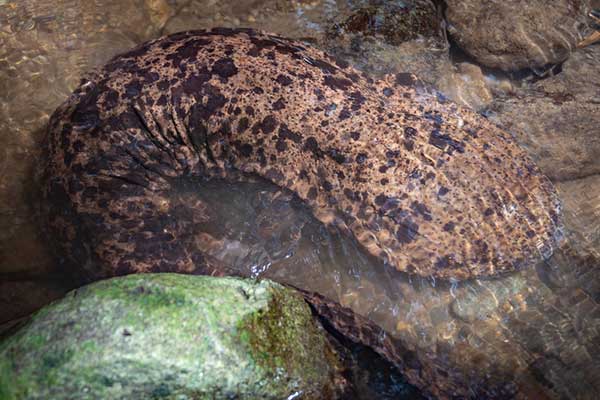Amphibians are a fascinating group of animals. They’re ancient, predating reptiles by millions of years. In fact, they were the first vertebrates to venture onto land hundreds of millions of years ago and for a long time they were the dominant group of animals on the planet.
They’re unique hybrid lifestyle, both aquatic and terrestrial, means that people have lots of questions about them. Most of these questions revolve around one of the most interesting things about amphibians: how they manage to breathe in the air and in the water.
How Do Amphibians Breathe?
Amphibians have a unique respiratory system that doesn’t rely entirely on a single source of oxygen. In addition to their lungs, amphibians can actually breathe through their skin. As long as their skin is moist, they can absorb oxygen directly from the air or water through the skin.
This is why amphibians typically secrete a lot of mucus, to keep their skin moist and ensure they can breathe. It’s also why most amphibians live only in wet, humid environments. If their skin dries out too much, they won’t be able to breathe. Their lungs aren’t enough to keep them alive on their own.
This is also why amphibians can stay underwater for so long. Just as their skin can absorb oxygen from the air, it can absorb oxygen from the water, too. While this method of breathing underwater isn’t as effective as gills, it still works quite well.
Because they breathe through their skin, extreme care must be exercised when handling an amphibian. The skin is highly permeable, and any contaminants on your hands will penetrate their skin easily. This also makes them highly vulnerable to pollution.
In addition to their skin, most amphibians also use the lining of their mouth to breathe. In fact, when their not underwater the mouth is in almost constant use for breathing.
Do all amphibians have lungs?
Again, some do, some don’t. More accurately, most do, a few don’t. The fully aquatic salamanders typically don’t develop lungs, but almost all other amphibians do develop them as they grow from tadpoles into adults. The giant salamander species are fully aquatic and spend their whole lives underwater.

Their lungs are quite a bit simpler in structure than the lungs of most air-breathing animals, and this is a large part of what keeps them so dependent on the water. While they can breathe air, most amphibians aren’t capable of using their lungs for breathing exclusively.
There are some salamanders, called the lungless salamanders, that have no lungs and rely entirely on their skin to breathe. In addition, some species of fully aquatic salamanders, which have gills, don’t grow lungs either.
Do any amphibians have gills?
Some do, and some don’t. There are several species of salamander, such as the axolotl, which live fully aquatic lives and have large external gills. These species, while they are amphibians, can’t live truly amphibious lives.
Many, if not most, amphibians have gills of some sort during their tadpole phase. During this stage of their lives, all amphibians are fully aquatic and so the most efficient way for them to breathe is to use gills.

While these gills are functionally the same as fish gills, they are structurally quite different. They consist of a single stalk of flesh line with dozens or hundreds of small, blood-vessel filled filaments that facilitate the gas exchange.
Each of these stalks can be moved around as an appendage, which stirs the water and helps prevent a build-up of oxygen depleted water around the gills that could occur in still or stagnant water.
How Long Can Amphibians Hold Their Breathe?
Since amphibians don’t rely entirely on their lungs or on air-breathing in general, they can hold their breath for an incredible amount of time. The exact amount of time will depend on the species, but 4-7 hours is typical for most frogs and many other amphibians.
For some species, they can hold their breath even longer.
Do Amphibians breathe air or water?

Both! On land, amphibians breathe air. Underwater, they breathe water. Their respiratory systems are unique in their ability to pull oxygen out of both air and water, and this versatility is one reason why amphibians, one of the oldest groups of vertebrates on the planet, are still around.
However, while they’re ability to breathe both under water and in the air is incredible, they’re respiratory system does have its flaws. They aren’t as good at breathing air as reptiles, mammals, or birds and they aren’t as good at breathing underwater as fish.
This is part of why amphibians today tend to be smaller animals- it’s hard for them to grow any bigger with an inefficient respiratory system.
Can all amphibians breathe underwater?
No, not all amphibians can breathe underwater. Some species are able to respirate through their skin when completely submerged, although they can still hold their breath for an impressive amount of time.



